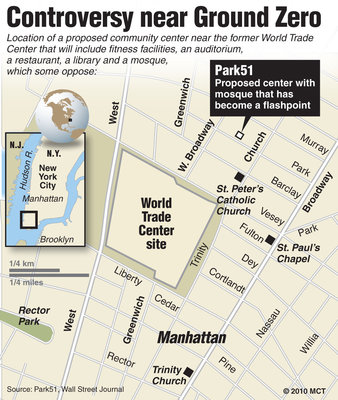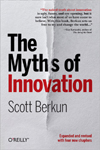‘UX professional’ isn’t a real job?
Lots of fun was stirred up by this recent post, ‘UX professional’ isn’t a real job. Which I think was sparked by this tweet:
'UX Professional' is a bullshit job title. It's just a way to over-charge naive clients. All web designers should be UX pros
— Ryan Carson (@ryancarson) September 3, 2010
The post isn’t much longer than the tweet. And it’s popular. Which testifies mostly to two things:
- Some people are very sensitive about job titles.
- People in the UX/design/etc world might win the prize for most sensitive.
If ever you want a popular blog post – post about how “UX doesn’t exist” or “interaction designers are kitten kicking liars” and you’ll be well on your way. These are passionate, if perhaps touchy, people.
For decades now people who work in various aspects of UI/UX/IA/Usability/kitchen sink/Interaction design/graphic design related work have agonized, fought, debated, resisted, modified, abbreviated, and debated again the names they use for their work and the roles. It’s an old wound and this jabs at the stitches.
An easy way to spot people with identity issues, or professions that feel marginalized and vulnerable, is how much drama they make about what they call themselves and what other groups of people call them. More telling perhaps is how much in-fighting and factionalism there is among groups with largely the same ambitions, rhetoric, and in some cases, members. They’re good at human computer interaction, but human to human interaction seems lost on them.
In the end, they’re just words. People who are busy with clients don’t worry so much about words (and they also have fewer slashes in their job description). If you provide great value to your clients, they’ll hire you no matter what you’re called. Provide little value to clients and you could call yourself God and still not get hired. Actually, calling yourself God (“I am the GOD of UX, hire me or I shall smite you”) is likely a very bad way to get a job, but that’s a story for another post.
Case in point: If someone were to say “Doctor is a bullshit job title“, few doctors would care. The fact that they think they’re doctors, and their patients pay them for doctoring, and everyone is happy with the result, proves that it’s not a bullshit title for the people actually involved.
In the case of the actual post (‘UX professional’ isn’t a real job), it does have some points. I agree that in the ideal world, there is just making: makers of things for people should know not only the technologies of making, but the skills of how to design things to be easy to use. All engineers and craftsmen and makers and managers who decide issues that effect customers should understand this stuff – but that’s in the ideal world, a place I’ve yet to find.
But there are simpler issues worth calling out:
- I don’t know anyone who calls themselves a UX professional. Is that real a title on someones business card? I’ve never seen it. So on that I agree. Doesn’t t having a business, or a business card, make you a professional?
- We forget (only some) people are much better than others at everything. There are some developers who can do everything. These people don’t understand why specialists are needed – because mostly they don’t need them. Unfortunately most people in most fields are not good at everything. The average web developer, or writer, or anything, has many skill gaps, despite the fact that it is their profession. Their recognition of their limitations is good – for the client and the client’s customers.
- We tend to be myopic in our experience. The client world, and the in-house world, are different things (the author does try to clarify this in the post). It’s easy to think all projects in the world are similiar to the ones you tend to do. It’s hard to imagine how a 500 person team functions if you mostly work on teams of 5. Without exposure to other kinds of work, or work for other kinds of clients, the notion of specialized roles or tasks is unimaginable, and for many people the unimaginable is lumped in with the stupid, dumb, unnecessary or wrong. A few minutes of thought reveals specialization is in all of our lives: doctors, restaurants, etc. Nothing wrong with that. Some buffets in the world have amazing food of all kinds, but more often, if you want the best at a specialized thing, you’re better off going to a specialist for it.
- Everyone thinks they’re great at something they suck at.It has happened dozens of times to me where someone tells me (e.g. talking) how great they are at design, or making easy to use things, or basketball, or singing, and they when I witness them doing that thing (e.g. doing), I quickly realize they suck. Sometimes they’re just very confused, but other times they’ve simply never seen someone do better than what they do, even if what they do is damn mediocre. Reading the comments, I’m sure this is true for many on the thread. There’s a wide range of what it means to be good, or good enough, or having a clue at all. Talking about design pretends everyone has the same notion, but we don’t. The notion ‘good enough’ has, I suspect a very wide range.
I’m fond of simply calling myself a writer. There should be a verb in your job. Usability engineers are really analysts or consultants. Designers of all flavors are, surprise, designers. Information architects are planners. If they are expected to be leaders beyond their specialization, then add the word lead. And on it could go. one word, preferably a verb, and we’re done. The pretense is fancier titles better convey the role, but I think that’s the real bullshit. Simpler titles, based on a verb, would be way more useful for clients or co-workers in figuring out what you can do for them.
However the competitive realities of the professional world incents all kinds of inflation and stupidity – every industry has its share of odd, weird, redundant and misleading job titles, and the tech world is not immune. But the wise realize job titles are not the problem. Instead it’s the skills and motivations of the people involved on your project, a challenge no amount of title-wrangling will ever solve.

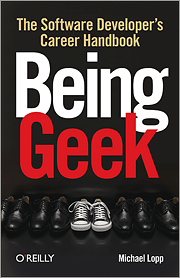


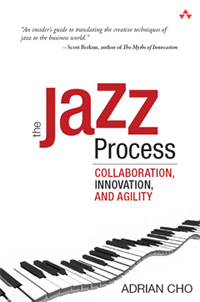
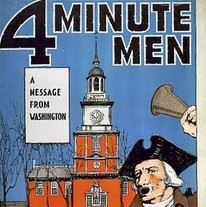 We’re very proud, in this day and age, of our capacity for consuming information. We often brag (or lament) about the speed of the world and the acceleration of change. Surely our TED talks, lightning talks, and
We’re very proud, in this day and age, of our capacity for consuming information. We often brag (or lament) about the speed of the world and the acceleration of change. Surely our TED talks, lightning talks, and 
